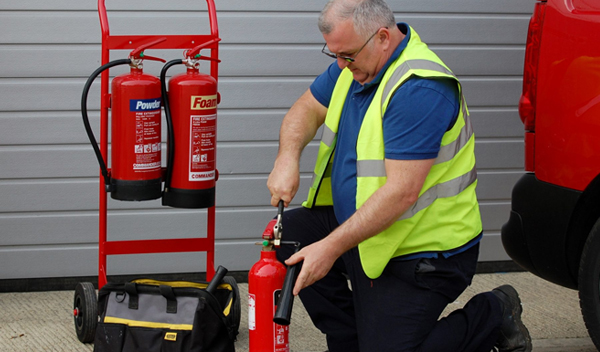This article was originally published by segisocial.com. Read the original article here.
Ensuring safety in homes and workplaces should always be a top priority, and this includes maintaining proper fire safety measures. One crucial component of this is the upkeep of fire extinguishers. These devices are vital for preventing minor fires from becoming major disasters. Regular fire extinguisher inspections, servicing, and testing are essential tasks that should never be overlooked. Properly maintained extinguishers can be the difference between a small scare and a catastrophic event, making them indispensable in any safety strategy. In this article, we'll guide you through why these services should be a key part of your safety checklist.
Importance of Regular Inspections
Regular fire extinguisher inspections are crucial to ensure that these devices are in good working condition when you need them the most. An inspection involves checking the tamper seal, ensuring the pin is intact, and looking for any signs of physical damage or corrosion. Inspections also include verifying the pressure gauge to ensure the unit is charged and ready for use. It's not just about compliance with safety regulations; it's about ensuring that you have a reliable first line of defense in case of a fire. Ignoring these inspections can lead to malfunctioning equipment that fails to operate when needed most.
Servicing Your Safety Equipment
Regular servicing, or fire extinguisher service, ensures that all components of your fire extinguisher are functioning correctly. This typically includes a thorough check of the agent inside the extinguisher to ensure it hasn't settled or degraded, which can happen over time. Servicing might also involve replacing parts that are worn out or outdated to keep the extinguisher in optimal condition. Technicians might also conduct a weight check to confirm the correct amount of extinguishing agent is present, which is crucial for effective operation during a fire emergency.
The Need for Adequate Testing
Fire extinguisher testing is a step beyond basic inspections and servicing. This process involves actually using the extinguisher to ensure it works as expected. Testing can reveal issues that inspections might not, such as clogs or faults in the spraying mechanism. This is particularly important for extinguishers in places with high readiness requirements, like kitchens or industrial areas. Regular testing ensures functionality and reinforces the safety net that these devices provide, giving everyone in the vicinity a greater sense of security.
Comprehensive Fire Extinguishing Systems
Beyond individual extinguishers, a fire extinguishing system provides a broader safety net for larger spaces such as commercial buildings or warehouses. These systems include automatic sprinklers and integrated fire alarms that work together to manage fire risks more effectively. Ensuring these systems are well-maintained is crucial for overall safety. They require regular checks to ensure all components, from water supply to alarm connections, are operational and can respond promptly in case of fire.
Closing Thoughts
While it's easy to overlook the regular maintenance of safety equipment, the peace of mind that comes with knowing you are prepared for emergencies is invaluable. Companies like Lone Star Fire & First Aid emphasize the importance of regular safety checks and maintenance to ensure that when the time comes, your fire extinguishers and systems function flawlessly, protecting both lives and property. Remember, staying safe is not just a regulatory requirement; it's a crucial responsibility that ensures a swift and effective response during critical moments.





Comments